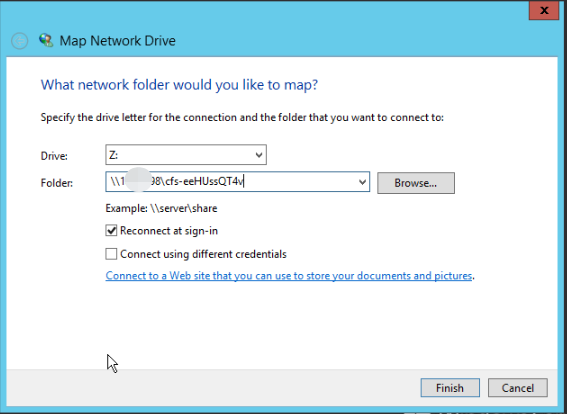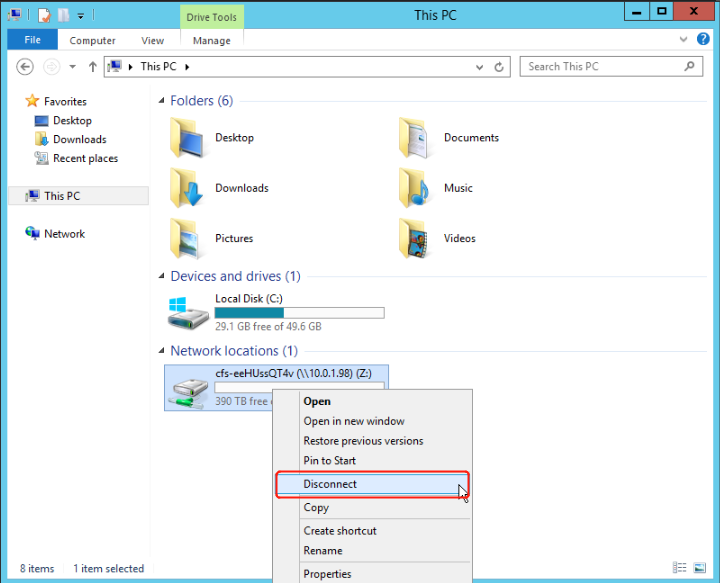This topic describes how to use a KFS file system in Windows. In this example, Windows Server 2012 R2 is used. You can use a KFS file system in the same way in other Windows operating systems such as Windows Server 2008, Windows Server 2016, and Windows Server 2019.
Connect to a KEC instance
- Log in to the KEC console.
- Find the KEC instance to which you want to mount a file system and click Connect Instance in the Operation column to connect to the instance by using VNC.
- In the upper-right corner, click Ctrl+Alt+Delete under Key Operations.
- On the system login page, enter your password.
Mount a KFS file system of the CIFS/SMB type
You can mount a KFS file system of the CIFS/SMB type by using the graphical user interface (GUI) or command line interface (CLI).
Mount a file system by using the GUI
- Open the Map Network Drive window.
Log in to the Windows server to which the file system is to be mounted, right-click This PC in the Start menu, and then choose Map Network Drive from the shortcut menu.

- Enter the network drive path.
In the Map Network Drive dialog box, select a drive letter from the Drive drop-down list and set the Folder parameter to the path of the file system. You can obtain the path in the mount command that is provided on the Details page of the file system.

- Verify that you can read data from and write data to the file system.
Click Finish. You are navigated to the drive that maps the file system. You can create a file in the drive to verify data reads/writes.

Mount a file system by using the CLI
Run the following command to mount the file system by using the file system ID. You can view the command on the Details page of the file system.
net use <Drive letter>: \\10.10.11.12\File system ID
Note: If the drive letter already exists, modify it as required.
Example:
net use e: \\10.20.1.188\cfs-CMefffev

Unmount a file system
- Log in to the Windows server to which the file system is mounted.
- Right-click the drive that maps the file system and choose Disconnect from the shortcut menu.

Delete a file system
- Log in to the KFS console.
- Find the file system that you want to delete and click Delete in the Operation column. In the message that appears, click OK.
Note
After the file system is deleted, resources cannot be restored. We recommend that you back up your resources before you delete the file system.

